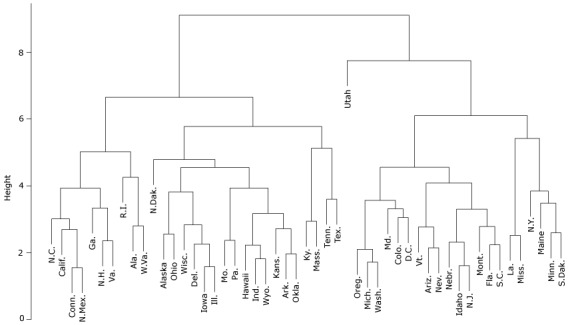Figure 1.

Cluster analysis of 500 US cities, summarized at the state level, plus Washington, DC, based on kidney disease–related factors (unhealthy behaviors, prevention measures, and outcomes related to CKD) and adjusted for socio-demographic characteristics.
